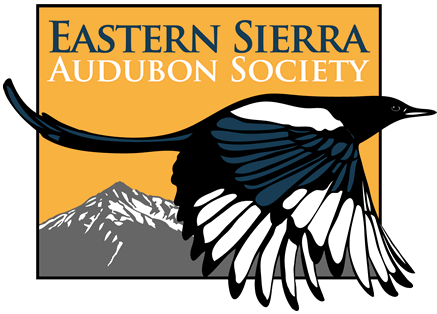Eleven species of gulls have been reliably documented as having occurred in Inyo County. This group of birds typically stirs strong feelings of love or hate among birders. Those who love them not always began that way, and, in fact, appreciation of the group is gained only after much work and effort.
Adults of all species are straight forward given good angles and long views. With attention paid to bill, leg, and eye colors, mantle shade, wing tip pattern and overall size of the bird, one usually can correctly assign a name.
Birds in sub-adult or heavily worn plumages are not for the faint-hearted or inexperienced. Even the experts are in disagreement over which marks are diagnostic for identification. And to complicate an already complex situation is the fact that gulls hybridize producing a myriad of muddled birds. That said, there are some sub-adults that are distinguished by marks that easily select them out from the rest.
Almost 98 percent of all Inyo gulls are either RING-BILLED or CALIFORNIA GULLS. If one spends time comparing their renderings in the two top field guides, Sibleys Guide to Birds and National Geographic Societys Birds of North America, correct identification of almost all Inyo gulls is possible. Both species are commonly seen in spring and fall and may be encountered in numbers at any time of the year.
The third most abundant species of gull in the county is the BONAPARTES GULL which is fairly common in spring and uncommon in fall. Some first summer birds, in non-breeding plumage, spend the summer in Inyo. The next most abundant is FRANKLINS GULL which is uncommon in spring and rare in fall. SABINES GULL, one of the easiest to identify because of its unique wing pattern (3 triangles: white, black, and gray), is rare to very uncommon in fall and is known only once in spring when an adult was found at Owens Lake 3 May 1995.
The remaining six species are extremely rare and have been found just a few times in the county. The HERRING GULL has been recorded about 18 times from February to June but most records are in late fall. The HEERMANS GULL has been documented only three times, twice in October and once in April. The THAYERS GULL has also been documented three times, twice in October and once in November. The GLAUCOUS-WINGED GULL has been found twice, in late November and mid December. The only GLAUCOUS GULL was at Tinemaha Reservoir 23-25 December 1990 and the only WESTERN GULL was at Owens Lake 14 – 24 September 2000.
Based on data from contiguous counties or Nevada, there are six species that could occur in Inyo County, and maybe already have. These are Laughing Gull, Little Gull, Mew Gull, Yellow-footed Gull, Lesser Black-backed Gull, and Black-legged Kittiwake. They are awaiting their appointment with a prepared birder who recognizes and documents their occurrence in the county. An additional be-on-the-lookout has been issued for a Red-legged Kittiwake reported once in Nevada.
Late fall is the perfect time to add to the county’s complement of gulls, so spend a few hours with bird identification books and report to your nearest reservoir or sewer pond!
Tags: gulls
